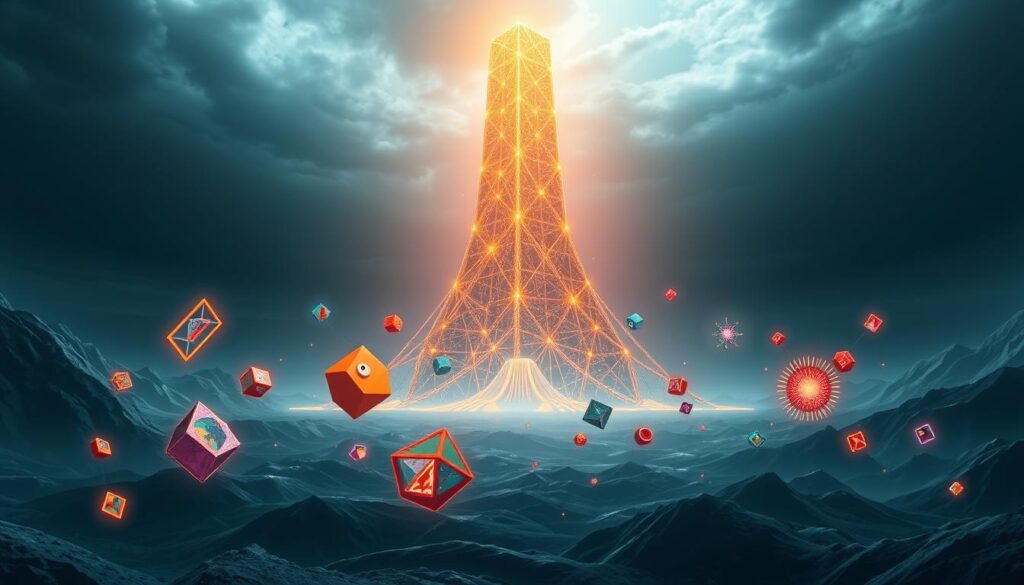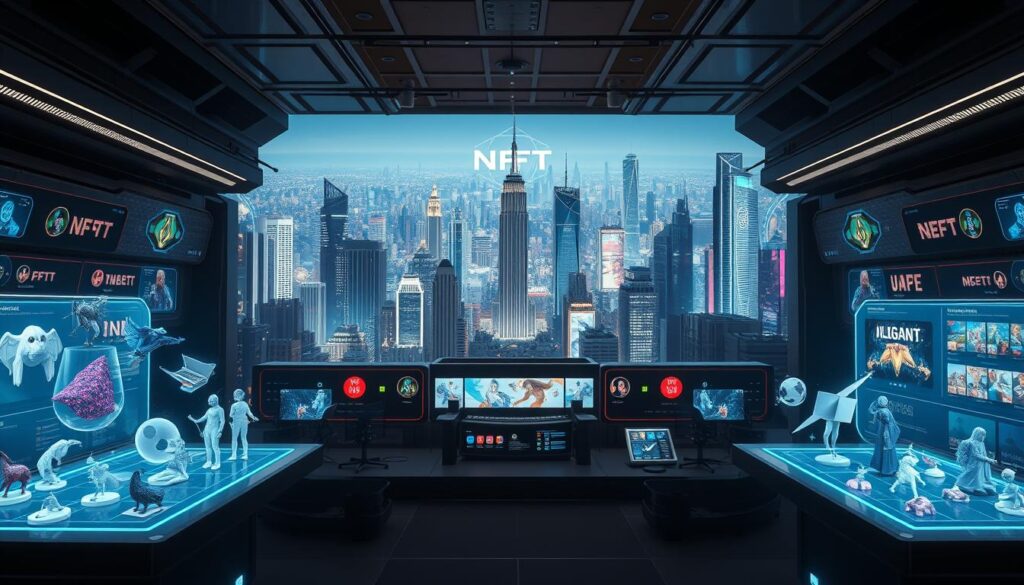The rise of blockchain technology has reshaped how we view ownership in the digital age. Unique tokens representing art, music, and virtual collectibles now let creators and collectors interact in entirely new ways. These digital assets thrive on scarcity and authenticity, creating opportunities that extend far beyond traditional markets.
Unlike interchangeable cryptocurrencies, each token holds distinct value tied to its content and creator. This uniqueness drives demand but also introduces volatility. Prices can swing dramatically, rewarding savvy participants while posing risks for unprepared investors.
For those exploring alternative revenue streams, understanding market dynamics is critical. Platforms like Ethereum host vibrant ecosystems where digital ownership intersects with gaming, metaverse projects, and more. Diversification across these areas can help mitigate risk while tapping into emerging trends.
Building sustainable earnings requires strategy. Some enthusiasts leverage royalties through creative works, while others focus on trading rare items. To learn about complementary approaches, explore proven methods for crypto-based earnings that align with long-term goals.
Key Takeaways
- Unique tokens create verifiable ownership of digital content through blockchain
- Market fluctuations demand careful research and risk management
- Diversification across art, gaming, and virtual worlds enhances stability
- Royalty structures enable ongoing revenue from creative works
- Strategic participation requires understanding platform ecosystems
Introduction to the World of NFT Investments
Modern finance is witnessing a seismic shift as blockchain redefines ownership verification. Unlike conventional assets, digital items now carry provable scarcity through decentralized systems. This evolution unlocks fresh possibilities for creators and collectors alike.

Overview of Digital Assets and Blockchain Technology
Digital assets have expanded far beyond cryptocurrencies. Unique tokens now represent everything from virtual real estate to concert tickets. Blockchain acts as an unalterable record keeper, ensuring each item’s history remains transparent.
Smart contracts automate ownership transfers, removing middlemen. This technical backbone supports:
- Instant global transactions
- Fraud-resistant provenance tracking
- Royalty mechanisms for creators
Why Non-Fungible Tokens Are Transforming Investment Strategies
Non-fungible tokens introduce scarcity to digital spaces where duplication was once effortless. A painting’s digital twin can now hold verifiable exclusivity, attracting collectors worldwide. This shift reshapes how value is perceived in virtual environments.
| Aspect | Traditional Assets | Digital Assets |
|---|---|---|
| Ownership Proof | Paper deeds/certificates | Blockchain verification |
| Market Access | Geographic limitations | 24/7 global trading |
| Liquidity | Slow settlement times | Immediate transfers |
Platforms harnessing blockchain technology enable direct creator-investor relationships. Artists retain control over secondary sales through embedded royalty systems. This democratization fosters innovation across industries while challenging traditional financial models.
Understanding NFTs and Their Underlying Technology
Unique identifiers are changing how we perceive value in digital spaces. Unlike traditional files that can be copied endlessly, cryptographic tokens now offer verifiable scarcity. This shift allows creators to assign provable ownership to anything from tweets to virtual sneakers.
Defining Non-Fungible Tokens
A non-fungible token acts like a digital fingerprint for assets. Each contains metadata that details its origin, traits, and transaction history. Three features set them apart:
- Indivisible structure (can’t be split like cryptocurrencies)
- Immutable ownership records via decentralized ledgers
- Customizable smart contracts for royalty enforcement

The Role of Blockchain in Securing Digital Ownership
Blockchains serve as tamper-proof registries for tracking token movements. Every transfer gets logged across thousands of computers, making fraud nearly impossible. Popular networks like Ethereum and Solana use distinct approaches:
| Platform | Key Advantage | Common Use |
|---|---|---|
| Ethereum | Smart contract flexibility | Art & collectibles |
| Flow | Low transaction fees | Gaming assets |
| Tezos | Energy efficiency | Eco-conscious projects |
This infrastructure ensures that even rare digital items maintain their authenticity over time. Artists can program automatic royalty payments, while collectors gain clear proof of item provenance.
Exploring Unique Digital Assets and NFT Marketplaces
Digital creators and collectors now engage through specialized hubs that blend creativity with blockchain verification. These spaces offer more than trading – they foster communities around unique digital items while ensuring transparent ownership records.

Key Platforms for NFT Trading
OpenSea leads with its vast secondary market, hosting everything from virtual trading cards to domain names. Rarible stands out by letting users vote on platform upgrades through its governance token. For premium digital art, Foundation curates exclusive drops from top creators.
| Platform | Specialization | Fee Structure |
|---|---|---|
| OpenSea | Multi-category | 2.5% per sale |
| Rarible | Community-driven | 1-5% flexible |
| Foundation | Premium art | 15% initial mint |
Emerging Trends in Digital Art and Collectibles
Generative art projects like Art Blocks let algorithms create one-of-a-kind pieces during minting. Augmented reality integrations allow collectors to display 3D assets in physical spaces. Sports memorabilia platforms such as NBA Top Shot combine video highlights with verifiable scarcity.
New marketplaces prioritize cross-chain compatibility, letting users trade across multiple networks. Security features like multi-signature wallets and automated royalty splits continue to evolve, building trust in these dynamic spaces.
NFT Investment Strategies for Passive Income Generation
Navigating the evolving landscape of digital collectibles demands sharp analysis and adaptability. Savvy participants combine market awareness with technical insights to uncover hidden value in blockchain-based items.

Spotting Value in Dynamic Markets
Successful collectors often focus on three core elements when evaluating opportunities:
- Creator traction: Projects with engaged communities and consistent output
- Utility potential: Items offering metaverse integrations or exclusive access
- Historical patterns: Markets showing cyclical buying opportunities
Blue-chip collections like CryptoPunks demonstrate how scarcity and cultural relevance drive long-term appreciation. Emerging platforms now blend physical-world benefits with digital ownership, creating hybrid value propositions.
Matching Methods to Financial Targets
Portfolio construction varies significantly based on individual timelines and risk profiles. Some approaches include:
| Strategy | Time Horizon | Risk Level |
|---|---|---|
| Curated acquisitions | 3-5 years | Moderate |
| Yield farming | 6-12 months | High |
| Diversified holdings | 1+ years | Low |
Platforms offering staking rewards enable holders to earn while maintaining ownership. Regular portfolio reviews help balance exposure across art, virtual land, and functional tokens. Always verify platform security and royalty structures before committing funds.
Step-by-Step Guide to Creating and Selling Your Own NFT Art
Transforming creative passion into digital assets requires both artistry and technical know-how. Start by selecting a medium that aligns with your skills and market demand. Popular formats range from illustrations to 3D animations, each offering distinct engagement potential.
Choosing Your Art Medium and Design Process
Digital art thrives on originality and technical quality. Use tools like Procreate or Blender to craft high-resolution files (minimum 3000×3000 pixels). Save work in widely accepted formats like PNG or MP4 for compatibility across platforms.
Analyze trending collections to identify themes resonating with collectors. Interactive pieces and generative art often command premium prices. Metadata matters – include detailed descriptions and attributes to boost discoverability.
Minting, Listing, and Promoting Your NFT
Select an NFT marketplace matching your blockchain preference and audience. Platforms like Foundation cater to premium artists, while OpenSea offers broader exposure. Set royalties between 5-10% to maintain an income stream from secondary sales.
Promote through:
- Teaser campaigns on Twitter/X and Discord
- Collaborations with digital galleries
- Limited-time drops to create urgency
Price strategically using recent sales data for similar works. New creators often start 20-30% below established artists to attract initial buyers while building reputation.
Trading and Flipping NFTs on Secondary Markets
Secondary marketplaces have become hotspots for spotting undervalued treasures in the blockchain space. These platforms allow collectors to trade previously owned items, with prices shifting based on rarity and demand spikes. Savvy traders monitor these fluctuations to identify profitable opportunities.
Mastering Market Pulse for Strategic Moves
Successful trading begins with tracking three core metrics:
- Floor prices: Baseline values for collections
- Sales volume: Indicates buyer interest levels
- Whale activity: Large holders often signal trend shifts
Technical tools like 7-day moving averages help spot momentum changes. The Relative Strength Index (RSI) adapts well to digital asset markets, flagging overbought conditions when values exceed 70.
| Strategy | Timeframe | Risk Profile |
|---|---|---|
| Scalping | Hours/Days | High volatility exposure |
| Swing Trading | Weeks | Moderate risk |
Platform-specific tactics matter. OpenSea traders consider factors like gas fees during low-network congestion. Nifty Gateway collectors often target limited-edition drops with historical resale premiums.
Always verify item rarity through trait analyzers before bidding. Strong community engagement around a collection frequently correlates with long-term value retention. Diversify holdings across art, gaming items, and virtual land to balance risk.
Earning Passive Income through NFT Staking
Token holders can now generate returns without selling their digital collectibles. By locking assets in smart contracts, users access rewards while maintaining ownership rights. This approach combines long-term asset retention with ongoing value creation.
Selecting a Reliable NFT Staking Platform
Evaluate platforms using four critical factors:
- Security audits: Third-party verification of smart contracts
- Reward structures: Transparent payout schedules and APY rates
- Lock-up flexibility: Options for partial withdrawals or early exits
- Community trust: Historical performance and user reviews
Leading services like Unifty support cross-chain staking, while NFT20 enables fractional ownership of high-value items. Muse focuses on music-related tokens, offering exclusive content access as bonuses.
| Platform | Reward Type | Minimum Stake |
|---|---|---|
| Unifty | Multi-token | 1 NFT |
| NFT20 | ETH + Governance | 0.1 ETH |
| Muse | Exclusive NFTs | Varies |
Managing and Monitoring Staked Assets
Track performance through platform dashboards showing accrued rewards and market value changes. Set calendar reminders for:
- Reward compounding opportunities
- Contract expiration dates
- Platform updates affecting terms
Diversify across multiple protocols to mitigate platform-specific risks. For broader strategies for crypto-based earnings, explore hybrid approaches combining staking with other yield-generating methods.
Investing in NFT Collections and Digital Art Investments
Artistic expression meets blockchain innovation in today’s collector markets. Curating valuable portfolios requires balancing creative appeal with technical metrics. Savvy participants analyze both aesthetic qualities and on-chain data to identify assets with lasting potential.
Evaluating Rarity and Value in Popular Collections
Digital art gains significance through verifiable scarcity and cultural impact. Projects like Art Blocks use algorithmic generation to create unique traits, while platforms track rarity scores for each piece. Key evaluation factors include:
Creator reputation, historical sales patterns, and community engagement levels. Established art collectibles often maintain value through dedicated fanbases and consistent utility updates. Always cross-reference market data with real-world relevance.
Leading nft marketplaces provide tools to assess item uniqueness. OpenSea’s trait explorer and Rarity Sniper’s ranking systems help quantify scarcity. Pair these insights with emerging trends in virtual galleries and metaverse integrations for informed decisions.
Diversification remains crucial. Balance high-profile acquisitions with emerging artists showing technical innovation. This approach builds resilient portfolios while supporting creative ecosystems shaping digital culture.


No comments yet